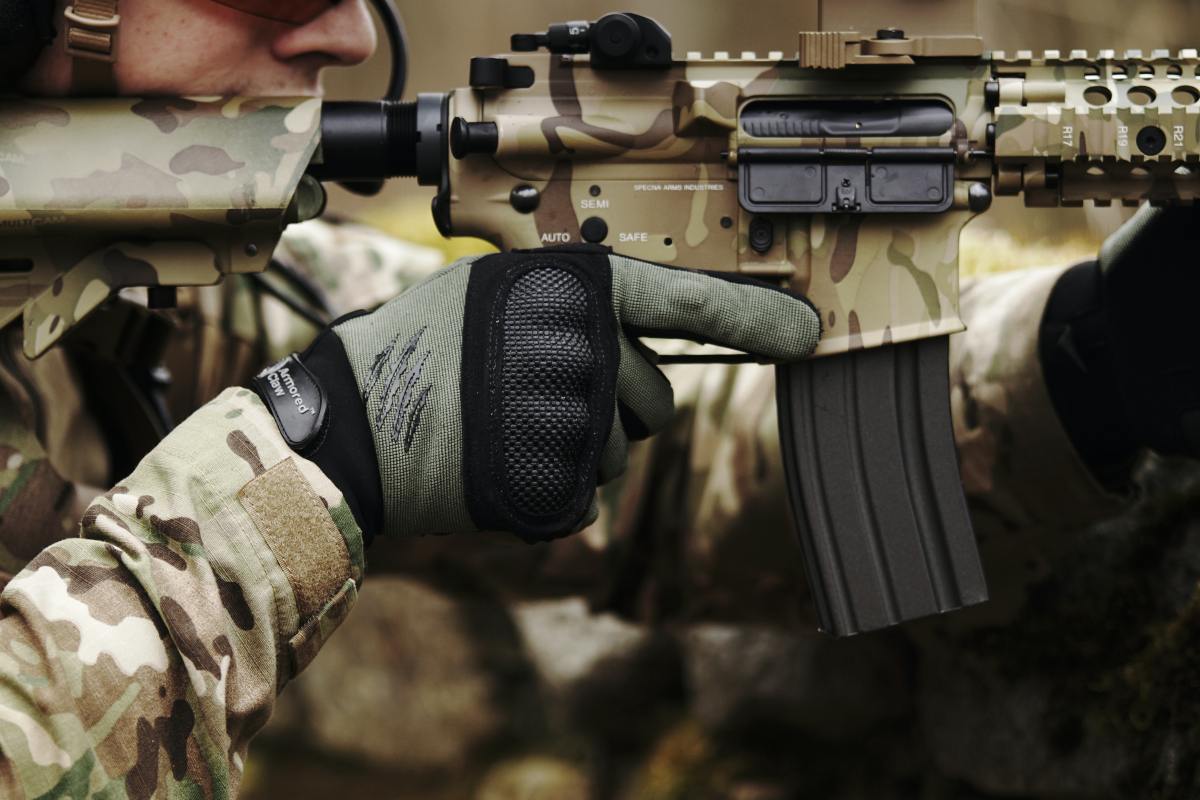Thanks for accepting me into this forum and I come with a question that has been hounding me for some time. This is what a shooter said in the 1960 era and I have not been sucessful in finding out the meaning of the statement , thinking somebody on the chat might have some info on it: (. Any two-over-ten bore in a 22 rifle, it crosses it line of fire at twenty-five yards; is in again at fifty, just the same, if it is two-over-ten.) I believe he was talking about a Winchester model 75. Might be a old timer will be familiar with this terminolgy? Any input is appreciated.. thanks
You are using an out of date browser. It may not display this or other websites correctly.
You should upgrade or use an alternative browser.
You should upgrade or use an alternative browser.
Two over ten?
- Thread starter Thofer
- Start date
The #1 community for Gun Owners of the Northeast
Member Benefits:
No ad networks! Discuss all aspects of firearm ownership Discuss anti-gun legislation Buy, sell, and trade in the classified section Chat with Local gun shops, ranges, trainers & other businesses Discover free outdoor shooting areas View up to date on firearm-related events Share photos & video with other members ...and so much more!
Member Benefits:
Here is an article that explains the idea for a 223.

Basically it is a concept based on the ballistic curve of the projectile. The bullet begins to drop as soon as it leaves the barrel. So you angle your rifle up. So for the 22 you zero your rifle sights so that at 10 yards it hits the target 2 inches high. The bullet will then follow a parabolic curve going up and then crossing the zero at 50 yards.

The Mythical 50/200 Yard Zero - Uncle Zo
Ever have someone suggest to zero your rifle at 50 yards because that will provide a secondary zero at 200 yards? Ever heard a broken clock is right twice a day? Let's take a closer look at the mythical 50/200 yard zero.
unclezo.com
Basically it is a concept based on the ballistic curve of the projectile. The bullet begins to drop as soon as it leaves the barrel. So you angle your rifle up. So for the 22 you zero your rifle sights so that at 10 yards it hits the target 2 inches high. The bullet will then follow a parabolic curve going up and then crossing the zero at 50 yards.
robmints
Ultimate Member
- Jan 20, 2011
- 5,125
Idk. But welcome to another downtrodden state. I often watch William Kirk. Washington Gun Law site.Thanks for accepting me into this forum and I come with a question that has been hounding me for some time. This is what a shooter said in the 1960 era and I have not been sucessful in finding out the meaning of the statement , thinking somebody on the chat might have some info on it: (. Any two-over-ten bore in a 22 rifle, it crosses it line of fire at twenty-five yards; is in again at fifty, just the same, if it is two-over-ten.) I believe he was talking about a Winchester model 75. Might be a old timer will be familiar with this terminolgy? Any input is appreciated.. thanks
Welcome aboard
IDK either, but I got some salmon from Seattle last September
IDK either, but I got some salmon from Seattle last September
With iron sights? That would assume bullet velocity. I guess a long time ago, there may not have been so many choices?Here is an article that explains the idea for a 223.

The Mythical 50/200 Yard Zero - Uncle Zo
Ever have someone suggest to zero your rifle at 50 yards because that will provide a secondary zero at 200 yards? Ever heard a broken clock is right twice a day? Let's take a closer look at the mythical 50/200 yard zero.unclezo.com
Basically it is a concept based on the ballistic curve of the projectile. The bullet begins to drop as soon as it leaves the barrel. So you angle your rifle up. So for the 22 you zero your rifle sights so that at 10 yards it hits the target 2 inches high. The bullet will then follow a parabolic curve going up and then crossing the zero at 50 yards.
still does not make sense that its 2" high at 10ft. that would need to be a pretty slow bullet (22 Quiet?)
- Jul 29, 2014
- 50,078
This diagram helps explain. Given that a bullet begins dropping as soon as it leaves the barrel, You are always aiming upward allowing the bullet to hit the 50 yard zero on its way up, then hit the 200 yard zero on its arc downward.
I'm not sure this answers the OP's question.

I'm not sure this answers the OP's question.
LGood48
Ultimate Member
Greetings. 

Does the 2/10 refer to twist rate?
I do understand that concept, but what my question is was the shooter referring to a combination of bore twist in conjunction with land and groove in bore of rifle?? Two over ten , could he have been referring to a certain size of bore??Here is an article that explains the idea for a 223.

The Mythical 50/200 Yard Zero - Uncle Zo
Ever have someone suggest to zero your rifle at 50 yards because that will provide a secondary zero at 200 yards? Ever heard a broken clock is right twice a day? Let's take a closer look at the mythical 50/200 yard zero.unclezo.com
Basically it is a concept based on the ballistic curve of the projectile. The bullet begins to drop as soon as it leaves the barrel. So you angle your rifle up. So for the 22 you zero your rifle sights so that at 10 yards it hits the target 2 inches high. The bullet will then follow a parabolic curve going up and then crossing the zero at 50 yards.
Thanks, we do get a ton of washing!!Idk. But welcome to another downtrodden state. I often watch William Kirk. Washington Gun Law site.
Wonder that myself, or land and groove depth of cut?? Or a combination?Does the 2/10 refer to twist rate?
Thanks , but you missed out on the Dungeness crab?Welcome aboard
IDK either, but I got some salmon from Seattle last September
From that image it looks like it's going up then down. That's an odd trajectory.This diagram helps explain. Given that a bullet begins dropping as soon as it leaves the barrel, You are always aiming upward allowing the bullet to hit the 50 yard zero on its way up, then hit the 200 yard zero on its arc downward.
I'm not sure this answers the OP's question.
View attachment 434297
When you point the barrel upward, the bullet DOES go up at the muzzle and then down after its apex.From that image it looks like it's going up then down. That's an odd trajectory.
Does the 2/10 refer to twist rate?
Wonder that myself, or land and groove depth of cut?? Or a combination?
I don't recognize that terminology. Somebody will likely be along who can perhaps answer that question.
But standard rifling for 22lr is 1 in 16. So whatever the term refers to, it doesn't appear (to me at least) to be rifling related.
Yes, it does. I was making fun of the rudimentary graphic.When you point the barrel upward, the bullet DOES go up at the muzzle and then down after its apex.
He mentioned bore. Is this a sight height over bore question? Scope 2" up over 10" of barrel? Seems odd. Or maybe scope objective diameter math to get the right height scope rings? Can the OP shed more light on the context of the 2 over 10 question?
Below is a formula to help you be a little more precise when determining sight height.
1.) Measure the bolt diameter and divide it in half.
2.) Measure the scope tube diameter and divide it in half. 1.000” / 2 = 0.500” (for 30mm tubes use 1.181”)
3.) Measure the distance from the top of the bolt in the rifle to the bottom of the scope on the rifle.
4.) Add the numbers found in the steps 1-3.
Example: Remington 700 .308 with a Leupold Mark 4 M1 Extended Range Tactical Riflescope, 6.5x20x50mm
1) Bolt diameter .696". .696"/2= .348"
2) Scope tube diameter 30mm 1.181/2= .591"
3) Distance from top of bolt to bottom of scope = .75"
Sight Height = .348" + .591" + .75" = 1.68"
The most common sight heights run from about 1.5 to 1.8 inches above center of bore.
1.) Measure the bolt diameter and divide it in half.
2.) Measure the scope tube diameter and divide it in half. 1.000” / 2 = 0.500” (for 30mm tubes use 1.181”)
3.) Measure the distance from the top of the bolt in the rifle to the bottom of the scope on the rifle.
4.) Add the numbers found in the steps 1-3.
Example: Remington 700 .308 with a Leupold Mark 4 M1 Extended Range Tactical Riflescope, 6.5x20x50mm
1) Bolt diameter .696". .696"/2= .348"
2) Scope tube diameter 30mm 1.181/2= .591"
3) Distance from top of bolt to bottom of scope = .75"
Sight Height = .348" + .591" + .75" = 1.68"
The most common sight heights run from about 1.5 to 1.8 inches above center of bore.
Dave MP
Retired USA
Welcome from PA!
Take a look at these helpful links – LOTS of amazing info!
FORUM RULES
Rules are written in the stone, Break the rules and you get no bones, all you get is ridicule, laughter, a shine box, and a trip to the house of pain.
Range Etiquette and Staying Safe
Admin News and Announcements
Gun Rights and Legislation
Industry Partners
MD Shooters Firearms Map
Acronym list
Take a look at these helpful links – LOTS of amazing info!
FORUM RULES
Rules are written in the stone, Break the rules and you get no bones, all you get is ridicule, laughter, a shine box, and a trip to the house of pain.
Range Etiquette and Staying Safe
Admin News and Announcements
Gun Rights and Legislation
Industry Partners
MD Shooters Firearms Map
Acronym list
Users who are viewing this thread
Total: 2 (members: 0, guests: 2)
Forum statistics
Latest threads
-
-
-
NYC and StunGuns: maybe caetano ban was ok, if you use different “reason” (1 Viewer)
- Started by delaware_export
- Replies: 0
-
-
-
-

